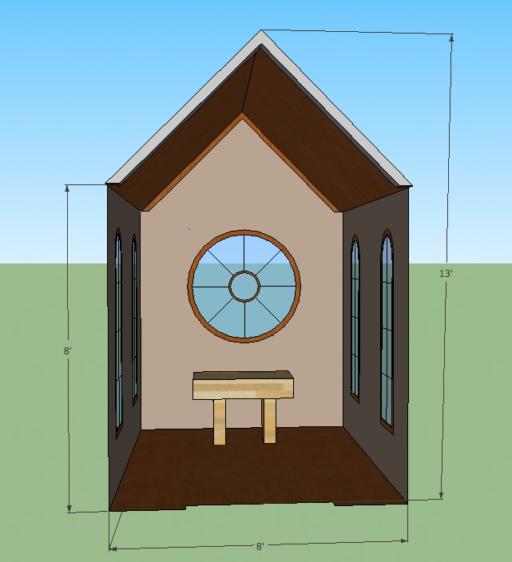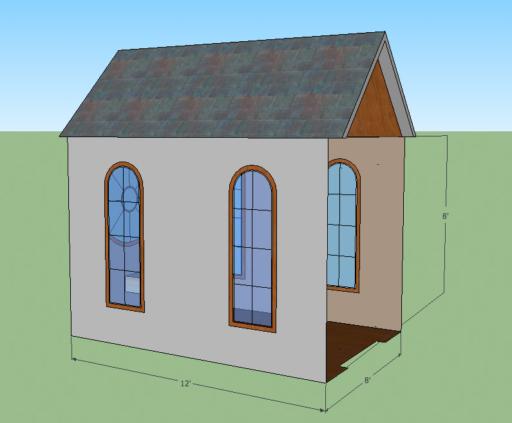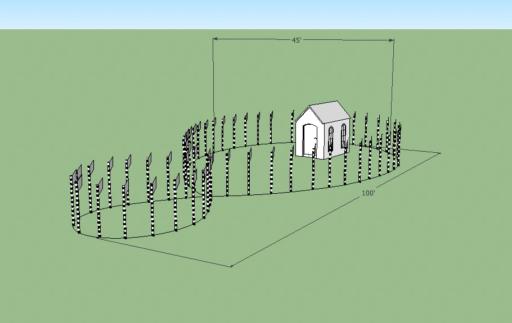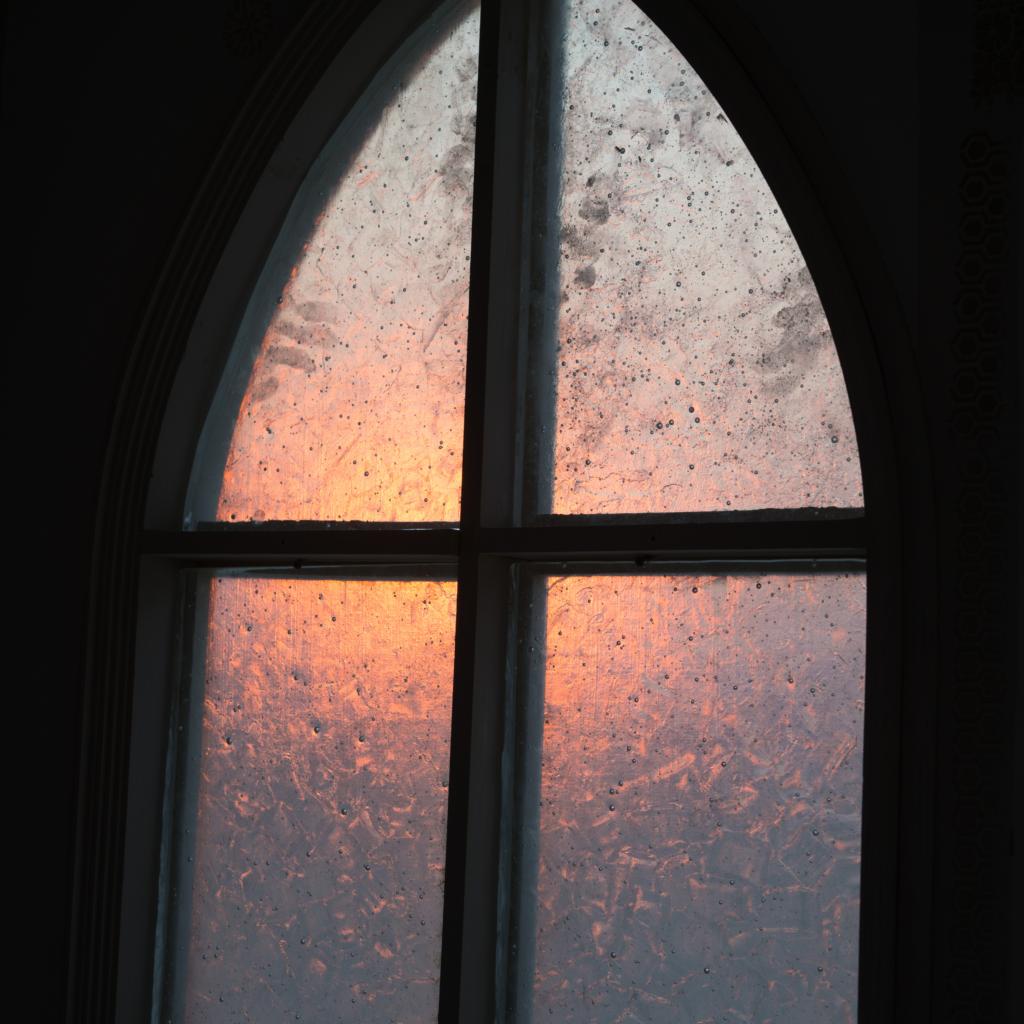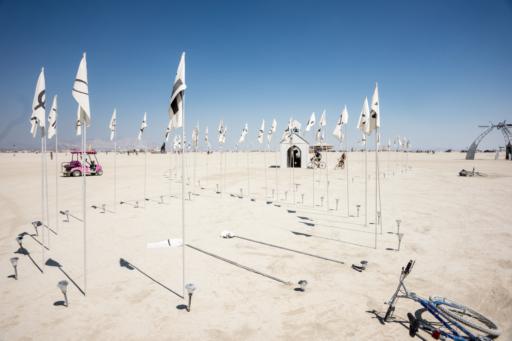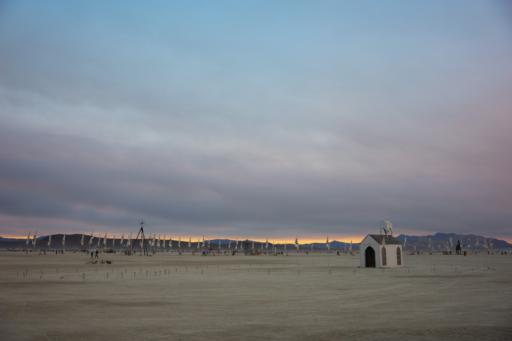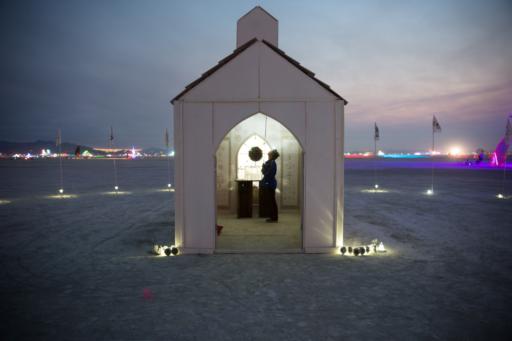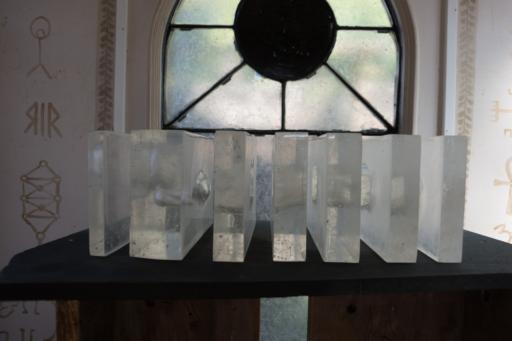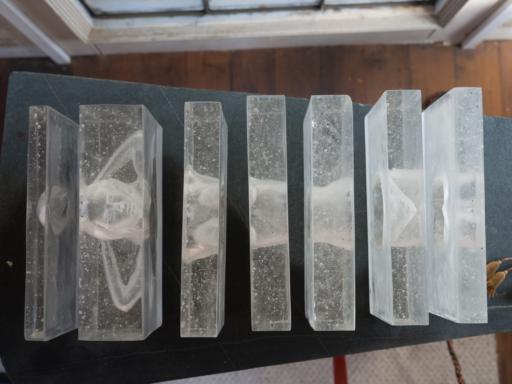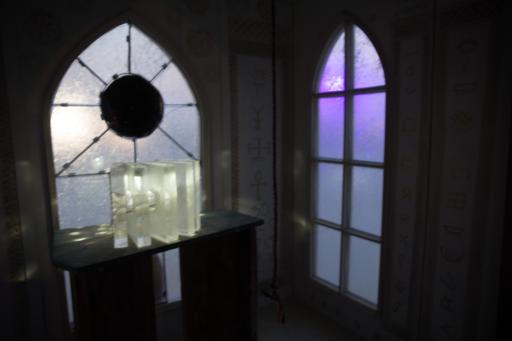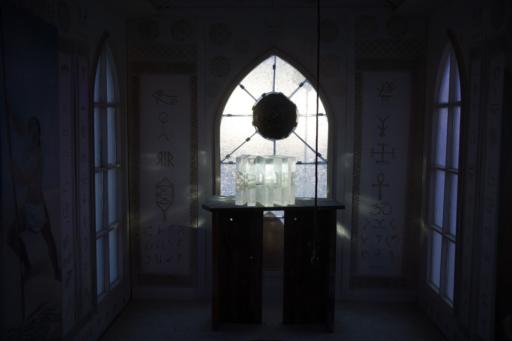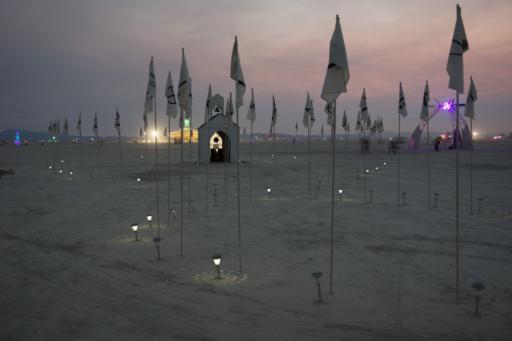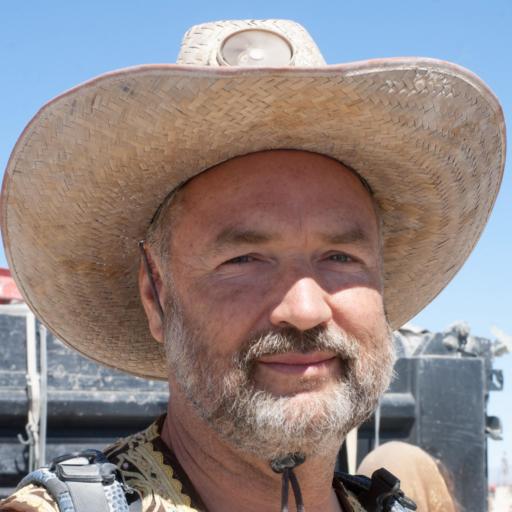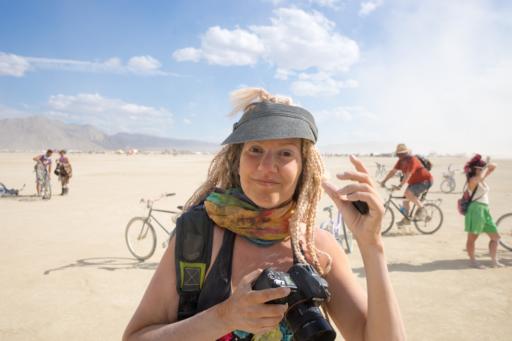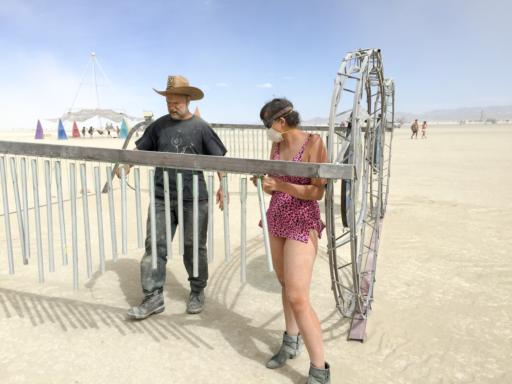Veritas
By 2013, a lot of things had changed. Kathy and I had reunited in the fall, and life was growing. I had been to Burning Man for multiple years, with several solo art projects, to varying success. In fact, at Burning Man the previous year, I had just received the enlightenment that led to me upturning my life, to Kathy and I coming together again, and to me choosing life over death. Kathy had never been, but felt that something this momentous was important, and that it would be a coming home for her. So, in 2013, Kathy and I decided we would do a joint project. All of this set the stage for something wild and crazy.
For our project, there were several key themes that we were interested in, revolving around symbolism and spirituality. My mathematical work is primarily in logic, and this is a tremendously symbolic field — we have symbols for logical operators, for numbers, for domains, for sets, for more things than one can imagine. Religion also has a set of symbols, for representing divinity, archetypes, natural phenomena, and more. And bringing this all together is physics and astronomy, with their own set of symbols for objects both incredibly small and incredibly large.
In each of these cases, the central purpose is the search for truth, and the entire symbolism is arranged around this purpose. Symbols can be a shorthand intended to communicate a concept, or in some cases, the symbols may take on the entire meaning of the thing being represented. I was atheist at the time and not very open to change, Kathy had had direct spiritual experience but was loving and open to discussion, so this seemed like very fertile ground.
The Burning Man theme that year was Cargo Cult, which evolved from ritualistic practices in Melanesia around World War II. Planes would arrive dropping cargo to troops, and the natives would see a ritual being performed to call the plane and its cargo into existence. This seems both silly, since we know there is nothing actually supernatural about it, and sensible, because the natives saw directly that the ritual actually worked and it was repeatable.
It seems clear that we, in our modern world, have our own cargo cults. To brainstorm, Kathy and I put together many ideas that point out the struggle between symbolism, religion, ritual, power, and many other things.\
We and all things here are a shadow, a projection of reality, and symbols are our language to seeing reality. We worship them by mistake, in our effort to see what is real. We perceive ourselves outside the circle of a godhead-center, yet we perhaps are the very center ourselves.
Symbols point the way to Heaven/Enlightenment/Perfection/Nirvana, but ultimately lead to nothing, to void, to destruction.
Symbols lead to Heaven/Enlightenment/Perfection/Nirvana, and you can choose any and they all lead to the same place.
Symbols are a confusing way to reaching inner peace, leading one to a maze of ritual and actions, and there is always a simple direct way.
Religion is simply about power of the leaders and holds down the masses. Symbols are a declaration or stamp of that power. There is nothing to be found called Heaven/Nirvana/Enlightenment.
In addition, seemingly by accident, we were reading the book Anathem, by Neil Stephenson. This is wonderful book where the planet’s intellectuals enter monastic communities to preserve their work. It also relies on the many-worlds interpretation of quantum mechanics.
Out of all these conflicting ideas eventually arose a plan for what we were going to do.
Design
For the actual design, we decided to construct a temple of worship to the very symbols that we use to describe our reality. The temple has cathedral windows that I cast in very thick 1″ panes, so that each of the panes shows a universe in itself . The temple is filled with religious and mathematical symbols, and it is set in a cycle of flags arranged in the shape of an analemma, each containing a mathematical or logical symbol.
It is these that we worship in our modern day society, the symbols of knowledge, of power, and of spirituality. While we may think the Melanesian people were silly for worshiping the symbols of material wealth, so do we, just in a different form.
Temple
Astronomically, we start with the analemma, which you have probably seen many times before printed on a globe somewhere. The analemma shows the declination of the sun as seen from Earth at a specific time over the course of the year. In the United States, it looks like an elongated figure 8 with one small loop and one big loop. In other words, if you take a photo of the sun at noon each day for a year in the United States, the sun would trace out an elongated figure 8, as shown in the diagram on the globe at the right.
Even though this description sounds sensible, there are some odd things about it. First, we aren’t really plotting the course of the sun through the year (that path would zip around 365 times during the year), we are sampling the position just once per day, so we get a figure that has just one cycle per year. And of course, it isn’t the sun that moves, but the Earth that rotates. So in many ways, the analemma is just an illusion, or a projection of reality. It is a useful projection though, because it can tell us about the seasons, solstices, equinoxes, and other astronomical facts.
The temple rests within the large loop of the analemma. There is an old church bell in the steeple — this turned out to be one of the most popular parts of the installation, and you could hear the bell ringing day and night.
Windows
The cathedral windows are a major symbols of the work. I cast these individually. Each pane in the large windows is 12″x16″ and over one inch thick. This is a low temperature casting so that bubbles and veiling are visible within the pane, suggesting astronomical spaces. The circular black window behind the altar represents The Void.
The thick glass also provides better isolation from the outside, so that the temple can be a place of quiet and contemplation.
The following images show the texture of the glass, The Void, and a window frame in construction. I had considered many different ways to bend the wood, but in the end, I chose the easy way, constructing the frames out of thin strips of wood that are bent into the proper shape and glued together.
In total, the windows use 1000lbs of glass. To keep the cost down, I used System 96 nuggets, which cost about 70 cents per pound. Each window took 2 days to cast, using a reusable KS-4 refractory mold.
Paintings and imagery
Kathy painted the imagery on the interior walls of the temple, including the two paintings. The female figure represents Truth and Beauty, peering at herself in the mirror to see her reflection (which is not truth itself, it is only a reflection). The male figure represents Truth Shattered. The idol is destroyed because real truth is eternal and intangible, it does not decay like its Earthly appearance. Only in male and female together can we find truth.
Altar
On the altar is a human sacrifice, a strange kind of illusion. The woman sacrificed is an illusion, she is the negative space, and it is possible to rearrange the parts of her body in different orders to form different figures. The figure is from Astraea, a previous work where I explored the issue to representation and negative spaces.
Crew
Kathy and I planned out most of the design. Phillipus Kühn and Isabella Serrano helped in the construction, helping to put the temple together before the burn, disassemble it and reconstruct it on the playa, then disassemble it for bringing it home. It now sits in our back yard, where we use it as a temple. This was a huge amount of work, and we so incredibly grateful! Phillip and Isabella had never been to Burning Man before, so this is an incredible experience in itself.
